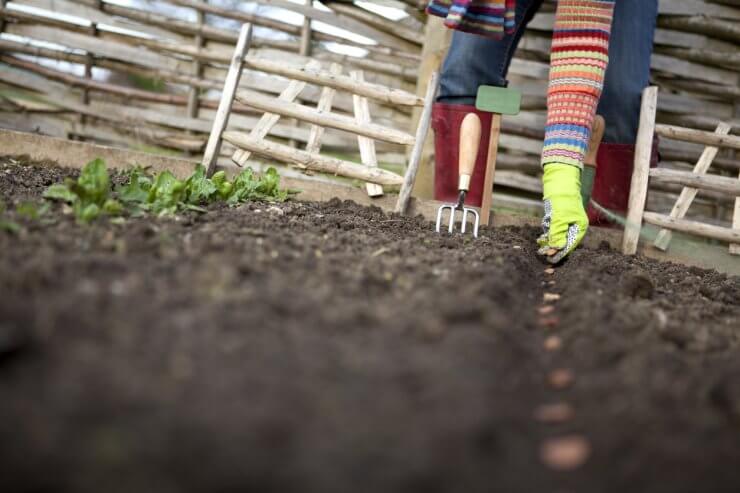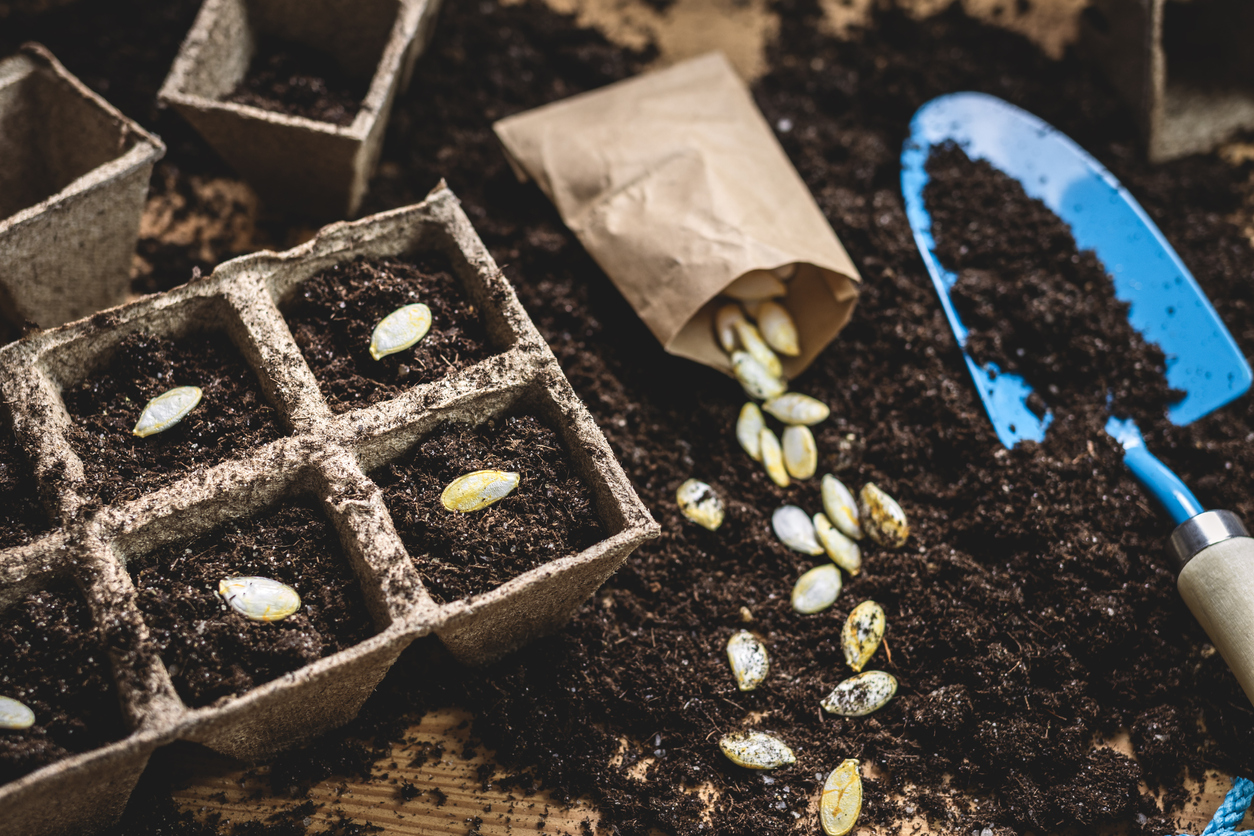
I’ll be the first to admit that one of the things I’ve struggled with in the garden is vegetable seed spacing. No matter how many times I plant veggies and herbs, it’s hard to remember that a tiny little seed is going to grow into a big, bushy tomato plant.
Still, every season, somewhere around late June, I realize that unless I want my vegetables to fight each other for nutrients and water, I either need to move or get rid of some plants. And yes, I do read the seed packet instructions. Sometimes I even use row tape to make sure I get nice, evenly spaced, and straight garden rows.
However, there are always those seeds that you’ve saved or the little heirloom vegetable seedling that your friend gave you. Unfortunately, those don’t always come with instructions or informational packets.
The solution? A vegetable seed spacing guide, of course. I gathered information from several extension programs, including the University of Illinois, Kansas State University, University of Georgia, and Penn State, and made my own guide, which I’m sharing here with you!
Discover 7 top tips for growing, harvesting, and enjoying tomatoes from your home garden—when you access the FREE guide The Best Way to Grow Tomatoes, right now!

The vegetable seed spacing guide that makes sense
Generally speaking, I love the information I can get from these and other extension programs. Many of them also offer things like soil testing, gardening classes, and plenty of other things that benefit the communities around them.
Sometimes, though, there’s too much information. For example, when I’m just looking for details on vegetable seed spacing, I don’t need to know the spacing for different types of corn or cucumbers since they’re all the same. Nor do I need to know the days to maturity or the optimal growing temperatures.
This information is important, but when you have a toddler helping and a husband asking questions and your dog chasing squirrels and your boss texting you and beans on the stove that you need to get back to, well, just give me the facts!
Anyway, here’s a simple, no-nonsense vegetable seed spacing guide for some of the most common vegetables you’ll find in the garden.
- Basil – 12″
- Beans – 4″
- Beets – 3″
- Broccoli – 18″
- Brussels sprouts – 18″
- Cabbage – 12″
- Carrots – 3″
- Cauliflower – 12″
- Celery – 9″
- Collards – 12″
- Corn – 15″
- Cucumber – 12″
- Eggplant – 18″
- Garlic – 3″
- Kale – 12″
- Leeks – 3″
- Lettuce (head)- 12″
- Lettuce (leaf) – 3″
- Muskmelon/Canteloupe – 24″
- Okra – 12″
- Onion – 3″
- Parsnips – 3″
- Peas – 2″
- Peppers – 24″
- Potato – 12″
- Pumpkin – 36″
- Radish – 1″
- Spinach – 2″
- Summer Squash – 24″
- Tomato – 24″
- Turnip – 2″
- Watermelon – 36″
Like I said, it’s not the fanciest thing you’ll ever see. But when you have soil under your fingernails and a meeting to get to, easy peasy gets the job done!
What’s your favorite vegetable and how far apart do you space the seeds?
Discover 7 top tips for growing, harvesting, and enjoying tomatoes from your home garden—when you access the FREE guide The Best Way to Grow Tomatoes, right now!





Unsubscribe please. Not interested